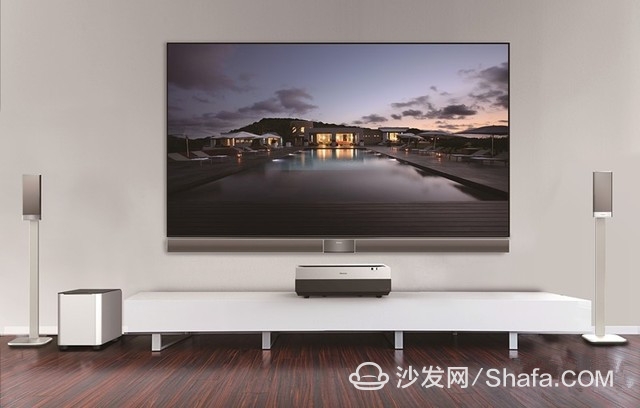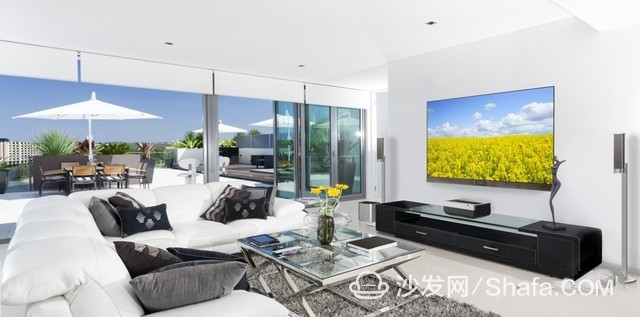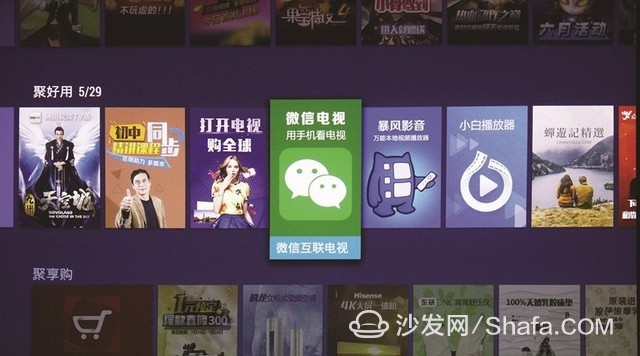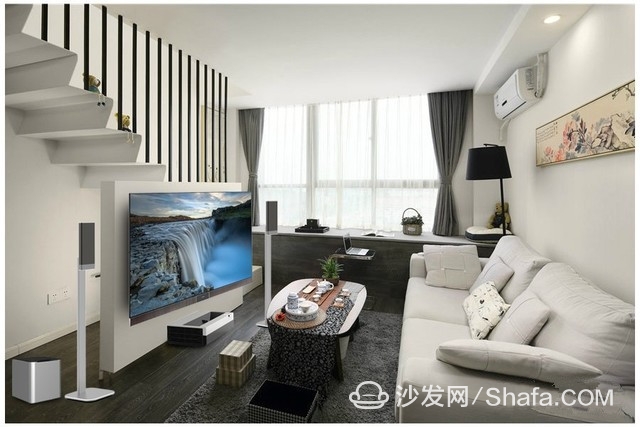In 2017, the big-screen battle in the living room became fiercer. Laser-based solid-state light sources continued to improve in performance and functionality, and more and more brands began to join the ranks of laser TVs. In the 80-inch and larger super-screen television market, traditional home theater projection systems have also begun to incorporate elements of laser light sources. It can be seen that the key words of the large-screen television product matrix in the living room in 2017 are undoubtedly the “laserâ€, and the most representative one is the current hot laser television and laser home projector. Below, Xiao Bian will analyze the difference between laser television and laser home projector from three angles. 
Hisense Laser TV Although technically, laser televisions and laser home projectors have a lot of the same place, but in essence, the former belongs to the home audio-visual entertainment center, and the latter is only an integral part of the entire video system. This is because the function of the laser television is not only the projection display, but also incorporates many functions into one, allowing the user to build a small world of audio and video entertainment without the need for additional equipment, while the laser home projector Need to match the projection screen, AV amplifier, home theater speaker system and a variety of source equipment in order to truly constitute a complete large-screen multi-channel audio and video entertainment overall solution.
Laser TV adopts ultra-short focus optical system, which greatly improves the flexibility of installation. One of the difficulties in the application of laser projector in home environment is that it requires a certain distance to complete the installation, and can not be placed like a large flat-panel TV. TV cabinet or direct wall-mounted installation, at the same time because of the long distance from the lens to the screen, it is easy to be affected by the ambient light and thus dilute the color and details of the picture, so want to be in the living room environment Using a home projector is not a simple matter. It is necessary to consider the relationship between the installation distance and the size of the projection screen, and also to pay attention to the environmental shading, to minimize the impact of external light on the screen.

Integrate with high-end home environment The laser television projected a 100-inch or so large screen by adopting an ultra-short-throw lens projection method. The host computer can be placed on the TV cabinet. After the anti-light screen, it can be displayed in the ordinary living room light environment. The color and detail performance. Taking Hisense's 4K laser TV LT100K7900UA as an example, it can project a 100-inch large screen in an ultra-short distance of less than 50cm. At the same time, it uses a 100-inch Fresnel passive biomimetic screen, but it will not be issued like a flat-panel TV. In addition to electromagnetic radiation, external light can also be effectively prevented from interfering with the screen, ensuring a true reproduction of the details of the picture. In addition, in order to avoid the geometrical distortion of the edges caused by ultra-short focus, Hisense Laser TV uses a geometric correction function to correct, effectively reducing the loss of available pixels on the screen.
Laser TV's richer smart TV content and interaction system The biggest difference between laser TV and laser projector in terms of technology lies in the diversity of functions. In addition to the excellent image-forming ability of laser projectors, most All are equipped with audio system, intelligent system, wireless network and Bluetooth connectivity, including Hisense's 4K laser TV with wireless audio transmission VS5100 surround sound system, VIDAA intelligent control system, with 15000+ movies, 150,000+ set TV series, 73000+ set animation, plus variety, animation, documentary and other resources, the cumulative video length of more than 1 million hours.


Smart TV/box information can focus on smart TV information network sofa butler (http://), China's influential TV box and smart TV website, providing information, communication, TV boxes, smart TVs, smart TV software, etc. Answering questions.

Hisense Laser TV
Laser TV adopts ultra-short focus optical system, which greatly improves the flexibility of installation. One of the difficulties in the application of laser projector in home environment is that it requires a certain distance to complete the installation, and can not be placed like a large flat-panel TV. TV cabinet or direct wall-mounted installation, at the same time because of the long distance from the lens to the screen, it is easy to be affected by the ambient light and thus dilute the color and details of the picture, so want to be in the living room environment Using a home projector is not a simple matter. It is necessary to consider the relationship between the installation distance and the size of the projection screen, and also to pay attention to the environmental shading, to minimize the impact of external light on the screen.

Integrate with high-end home environment
Laser TV's richer smart TV content and interaction system The biggest difference between laser TV and laser projector in terms of technology lies in the diversity of functions. In addition to the excellent image-forming ability of laser projectors, most All are equipped with audio system, intelligent system, wireless network and Bluetooth connectivity, including Hisense's 4K laser TV with wireless audio transmission VS5100 surround sound system, VIDAA intelligent control system, with 15000+ movies, 150,000+ set TV series, 73000+ set animation, plus variety, animation, documentary and other resources, the cumulative video length of more than 1 million hours.

Laser TV resources are rich in functions and comprehensive
Hisense laser TV adopts DLP solution, and 4 meters of sight distance can be viewed. In addition to the light source part, laser light source is used. For the other key display chip of the entire display system, there is a certain difference between laser television and laser projector. . Laser TV basically uses TI's Texas Instruments single-chip DLP solution. The advantage of the picture is that the contrast of the high-light part of the picture is more prominent, and the sharpness and sharpness of the overall picture are very prominent. 
Hisense laser TV can be watched with DLP solution 4 meters away
After nearly a decade of development, Hisense has led the continuous development of laser television technology. The screen size has expanded from a single 100 inch to 88-120 inches. The screen resolution has been increased from the original 1080p full HD to 4K ultra high definition, and Added HDR high dynamic range technology support. For laser televisions and laser projectors, the laser projectors have certain requirements for house types, and Hisense Bailey laser televisions can be viewed at a viewing distance of about 4 meters, which is more suitable for Chinese public living rooms. At present, the market share of Hisense laser TVs in the ultra-large screen TV market of 85-inch or more has exceeded 50%. The future is "big". Smart TV/box information can focus on smart TV information network sofa butler (http://), China's influential TV box and smart TV website, providing information, communication, TV boxes, smart TVs, smart TV software, etc. Answering questions.
Insulation Tubes,Pvc Pipe Insulation,Insulated Pex Pipe,Rubber Insulation Tube
Shenzhen Huiyunhai Tech.Co., Ltd. , https://www.cablesleevefactory.com
